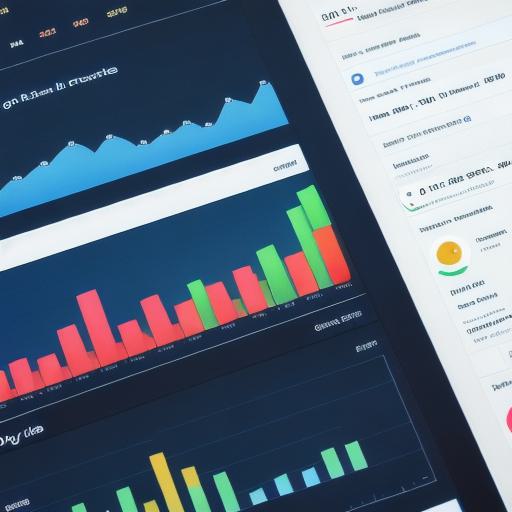Marketing research is a crucial aspect of any business strategy. It involves gathering, analyzing, and interpreting data about customers, markets, and competitors to make informed decisions that drive growth and profitability. However, with so many marketing research tools available, it can be challenging for businesses to choose the right ones. In this guide, we will explore some of the top marketing research tools for businesses, along with their features, benefits, and drawbacks.
Table of Contents
- 1. Introduction
- 2. Surveys
- 3. Focus Groups
- 4. Online Analytics
- 5. Social Media Listening
- 6. Competitor Analysis

- 7. Content Marketing
- 8. Email Marketing
- 9. Paid Advertising
- 10.
Summary
1. Introduction
Marketing research is an essential part of any business strategy. It helps businesses understand their customers, markets, and competitors, which in turn helps them make informed decisions that drive growth and profitability. Marketing research tools are used to gather, analyze, and interpret data from various sources such as surveys, focus groups, online analytics, social media listening, competitor analysis, content marketing, email marketing, and paid advertising. In this guide, we will explore some of the top marketing research tools for businesses.
2. Surveys
Surveys are a popular way to gather data from customers. They can be conducted online or offline, and they allow businesses to collect information about customer preferences, behavior, and opinions. Surveys can also be used to measure the effectiveness of marketing campaigns, gather feedback on products or services, and understand customer needs and expectations.
One popular survey tool is Google Forms. It’s free, easy to use, and allows businesses to create surveys with a variety of question types, including multiple-choice, rating scales, and open-ended questions. Another popular survey tool is Typeform, which offers advanced customization options, integrations with other tools, and analytics features.
Surveys can be effective in gathering data, but they have some limitations. They may not provide in-depth insights into customer behavior or preferences, and respondents may not be representative of the overall population. Additionally, surveys may be time-consuming to create and analyze, especially for larger businesses.
3. Focus Groups
Focus groups are another way to gather data from customers. They involve bringing together a small group of people to discuss their thoughts, feelings, and behaviors related to a particular topic. Focus groups can provide in-depth insights into customer preferences, behavior, and opinions, and they can also be used to test new products or services.
One popular focus group tool is Zoom. It’s free, easy to use, and allows businesses to conduct virtual focus groups with participants from around the world. Another popular focus group tool is Miro, which offers advanced customization options, integrations with other tools, and analytics features.
Focus groups can be effective in gathering data, but they have some limitations. They may not be representative of the overall population, and the insights gathered may not be scalable to larger businesses. Additionally, focus groups can be time-consuming and expensive to conduct, especially for smaller businesses.
4. Online Analytics
Online analytics tools are used to track website traffic, user behavior, and other metrics related to online activity. They can provide valuable insights into customer behavior and preferences, and they can also be used to measure the effectiveness of marketing campaigns.

One popular online analytics tool is Google Analytics. It’s free, easy to use, and provides a wide range of features such as real-time data tracking, user segmentation, and goal setting. Another popular online analytics tool is Adobe Analytics, which offers advanced customization options, integrations with other tools, and predictive analytics features.
Online analytics can be effective in gathering data, but they have some limitations. They may not provide insights into offline activity or customer behavior outside of the website or app. Additionally, online analytics tools may not be able to capture the full range of user behavior and preferences.
5. Social Media Listening
Social media listening tools are used to monitor social media channels for mentions of a brand or topic, and to analyze the sentiment and tone of the conversations. They can provide valuable insights into customer feedback, brand reputation, and market trends.
One popular social media listening tool is Hootsuite Insights. It’s free, easy to use, and provides features such as real-time data tracking, sentiment analysis, and team collaboration. Another popular social media listening tool is Brandwatch, which offers advanced customization options, integrations with other tools, and analytics features.
Social media listening can be effective in gathering data, but it has some limitations. It may not provide insights into all types of social media activity, and the data gathered may not be representative of the overall population. Additionally, social media listening tools may require a significant investment in time and resources to set up and maintain.
6. Competitor Analysis
Competitor analysis tools are used to gather data about competitors’ products, pricing, marketing strategies, and other factors that can impact a business’s success. They can provide valuable insights into market trends and help businesses identify areas for improvement in their own strategies.
One popular competitor analysis tool is SEMrush. It’s free, easy to use, and provides features such as keyword research, backlink analysis, and social media monitoring. Another popular competitor analysis tool is SpyFu, which offers advanced customization options, integrations with other tools, and analytics features.
Competitor analysis can be effective in gathering data, but it has some limitations. It may not provide insights into all aspects of a competitor’s business, and the data gathered may not be up-to-date or accurate. Additionally, competitor analysis may require a significant investment in time and resources to set up and maintain.
7. Content Marketing
Content marketing tools are used to create, distribute, and measure the effectiveness of content such as blog posts, videos, infographics, and social media posts. They can provide valuable insights into customer engagement and help businesses build brand awareness and thought leadership.
One popular content marketing tool is HubSpot. It’s free, easy to use, and provides features such as blogging, email marketing, and social media scheduling. Another popular content marketing tool is Yoast SEO, which offers advanced customization options, integrations with other tools, and analytics features.
Content marketing can be effective in gathering data, but it has some limitations. It may not provide insights into all aspects of customer behavior or preferences, and the data gathered may not be representative of the overall population. Additionally, content marketing requires a significant investment in time and resources to create and distribute high-quality content.
8. Email Marketing
Email marketing tools are used to send targeted messages to customers via email. They can provide valuable insights into customer engagement and help businesses build relationships with their audience.
One popular email marketing tool is Mailchimp. It’s free, easy to use, and provides features such as email list management, campaign tracking, and automation. Another popular email marketing tool is ConvertKit, which offers advanced customization options, integrations with other tools, and analytics features.
Email marketing can be effective in gathering data, but it has some limitations. It may not provide insights into all aspects of customer behavior or preferences, and the data gathered may not be representative of the overall population. Additionally, email marketing requires a significant investment in time and resources to build and maintain an email list.
9. Surveys and Polls
Surveys and polls are used to gather feedback from customers on their experiences and preferences. They can provide valuable insights into customer satisfaction and help businesses identify areas for improvement in their products or services.
One popular survey tool is Google Forms. It’s free, easy to use, and provides features such as real-time data tracking, customization options, and sharing options. Another popular survey tool is Typeform, which offers advanced customization options, integrations with other tools, and analytics features.
Surveys and polls can be effective in gathering data, but they have some limitations. They may not provide insights into all aspects of customer behavior or preferences, and the data gathered may not be representative of the overall population. Additionally, surveys and polls require a significant investment in time and resources to design and distribute.
Summary
There are many different types of marketing research tools available, each with its own strengths and weaknesses. When choosing which tools to use, it’s important to consider the goals of your research, the resources available to you, and the target audience you want to reach. By using a combination of these tools, businesses can gather valuable insights into customer behavior and preferences and make data-driven decisions about their marketing strategies.




